Birds; You do not have to be a “birder” to love birds.
The pictures in this article are of birds I have seen in my backyard in Guilford Connecticut or Phippsburg Maine. I AM NOT A BIRDER. I do not keep a bird list and I maintain an equal opportunity feeder, (not just the pretty birds). I consider myself a bird conservationist. I recognize the important contributions of our avian friends to our environment. These tiny creatures have mastered flight, and many have vision better than ours. Eagles can spot a mouse from 200 feet up. Swallows that lived under a deck next door in Guilford kept the air free of mosquitoes. What humans can claim those skills?

THE MIGRATORY BIRD TREATY ACT of 1918 came about because of the destruction of bird populations for ornamental feathers. It prohibits the capture or killing or sale of migratory birds. Now 100 years later the Act is about to be dismantled by the Trump administration. We cannot let that happen. Birds are essential to the balance of nature.
If there is any silver lining to the current Corona virus pandemic, it is that our air, rivers, lakes and wildlife are benefitting from scaled back industrial and commercial activity. It is reassuring to have it happen relatively quickly. Birds have been threatened by human activity from oil rig disasters in the Gulf of Mexico to increased storms along migration paths. Being sucked into jet engines is another threat, diminished by reduced air travel.

The American Bird Conservancy web site has a great summary of RISKS TO BIRDS and helpful solutions. Risks include habitat loss, pesticides, window collisions, climate change, and cats. Cats were brought to this country by the colonists. Numbers of cats have tripled in the last 40 years. They kill more than a billion birds annually. It seems so easy to keeps cats indoors and neuter feral cats. People tell me “My cat wouldn’t do that.” “They are too docile or too old”. It is the nature of cats to hunt birds. The old ones maybe just raid nests for the babies or hunt poorly, but hunt they do! Window collisions can be minimized with decals and window coverings that are transparent to us but easily seen by birds. Many bird supply stores carry them. Keeping the feeder close to the house within 2 feet or far away more than 10 feet reduces casualties.
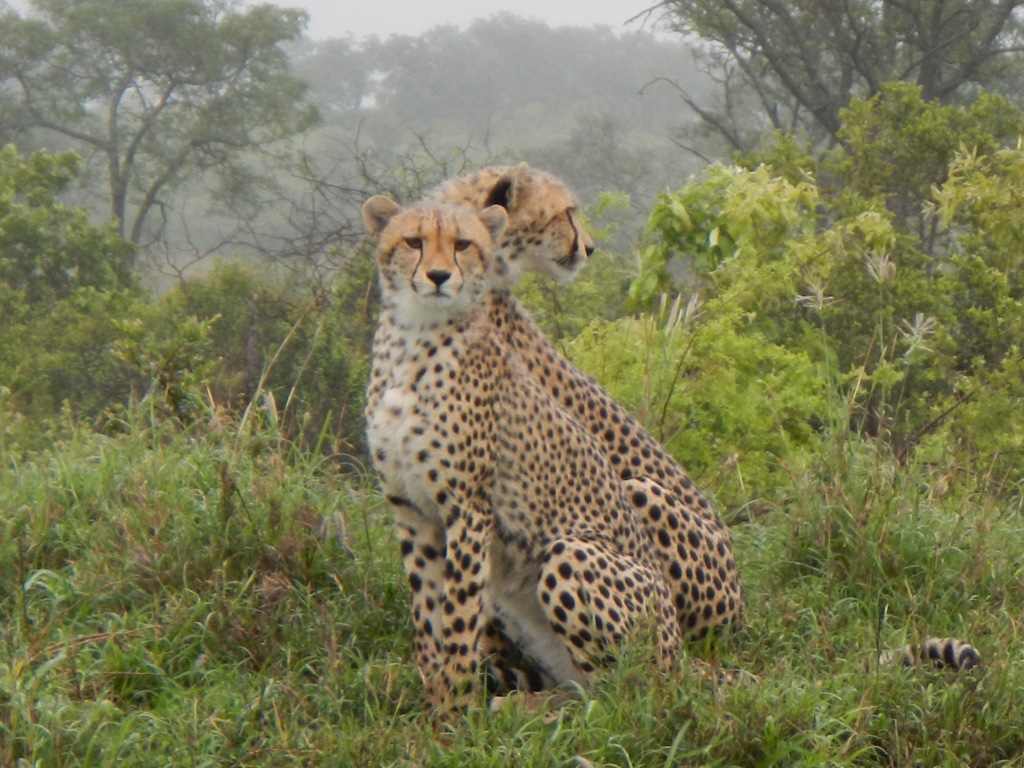
Cats in Sangita reserve South Africa
Doug Tallamy has written a wonderful book called Bringing Nature Home (1), about the importance of Native Plants to sustain wildlife. I had never realized this simple fact. Native plants co-evolved with insects and birds and thus are interdependent. The right food must be available at the time birds traditionally migrate through an area or arrive home. With global warming birds may arrive before the right insects are available or the insects may mature before the birds arrive. Either way there is a dangerous mismatch. I used to love Ginko trees; they resist pollution and are biologically one of the oldest tree species, having survived hundreds of millions of years. A Ginko tree will host maximum 5 insect species as it contains toxic aldehydes. An oak tree supports 534 species of insect and birds and more moths and butterflies than any other native tree. By the way most insect species are beneficial to wildlife.
We can support birds by advocating for them through organizations like Cornell Lab of Ornithology and Massachusetts Audubon (the oldest Audubon Society in North America). They provide wondrous photography on Instagram and many educational programs available to the public.
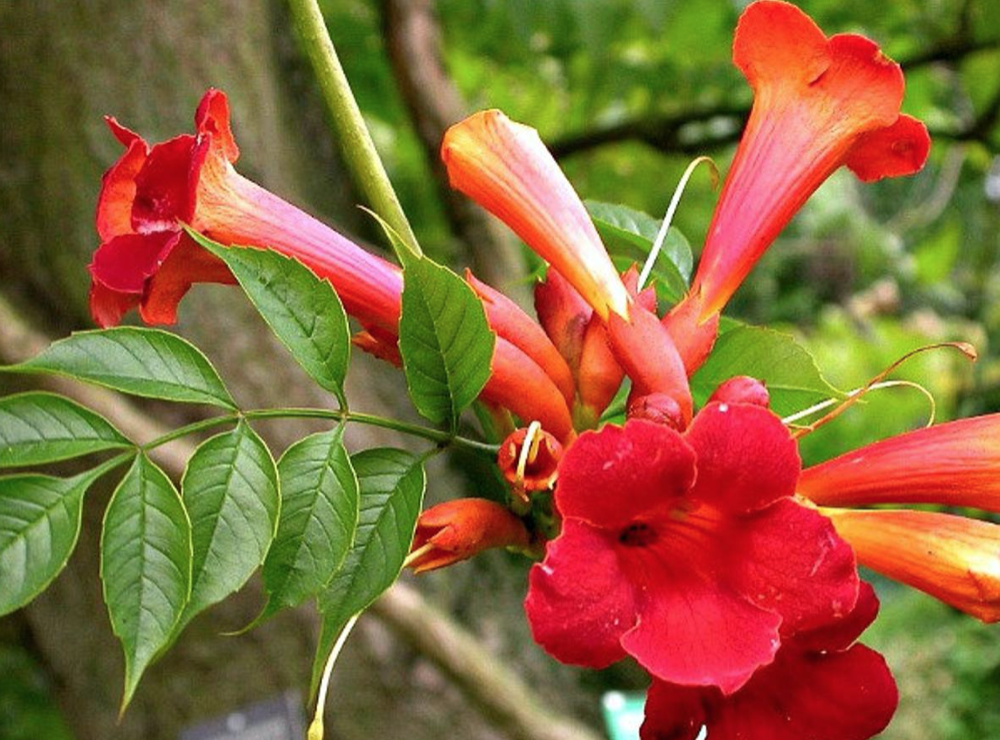
As committed gardeners, we can plant the native trees and shrubs most desired by birds and butterflies. It makes perfect sense. Think of a hummingbird with its long thin beak. It needs long thin flowers such as penstemon (beardtongue) or trumpet flower to survive. We can also support our avian friends by feeding them. Many people feed in the winter; food is scarce in cold climates. When spring comes it is not time to remove the feeders as, seeds and insects have not yet arrived. You will not spoil birds by feeding them. It is estimated a bird only obtains 15% of its food from feeders, but that can be an essential supplement. Sometimes a totally unexpected bird can appear at the feeder such as a monk parakeet in Guilford CT.
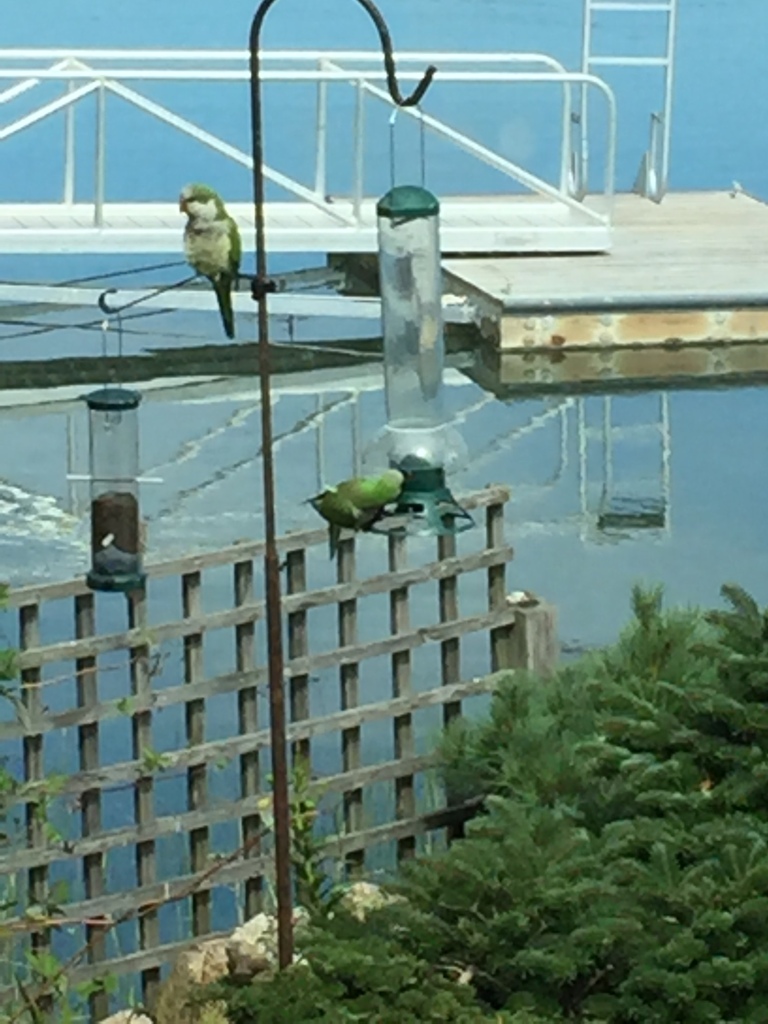
Cardinals and blue jays may not migrate. I found great birds at my feeders in April. It was a joy to me to have 15 goldfinches at one time feasting on my 2 thistle feeders. Ruby throated Hummingbirds arrive in May in Maine. These feisty little creatures are truly miraculous as they jump up vertically before taking off in flight. They can chase each other at times, tiny power-balls buzzing around. What can be easier than providing a red topped feeder at 5 feet above ground with a mixture of ½ cup sugar to 2 cups water. I boil it to sterilize and cool it before filling the feeder. More than a dozen hummingbird species summer in the US.
The greatest thrill to me was having a Baltimore oriole and rose breasted grosbeak couple at once at my specialized oriole feeder. How does a Baltimore oriole know to go to a feeder stocked with grape jelly and orange halves? They visited daily for about a month. Then left to raise young and eat insects. Blue jays like sunflower seeds that they can store in their gullets for later consumption. They are messy eaters providing food for the ground feeding mourning doves. We also have house finches, purple finches, chipping sparrows and tree sparrows. I love the brilliant red male cardinal and his wife with her bright orange beak.
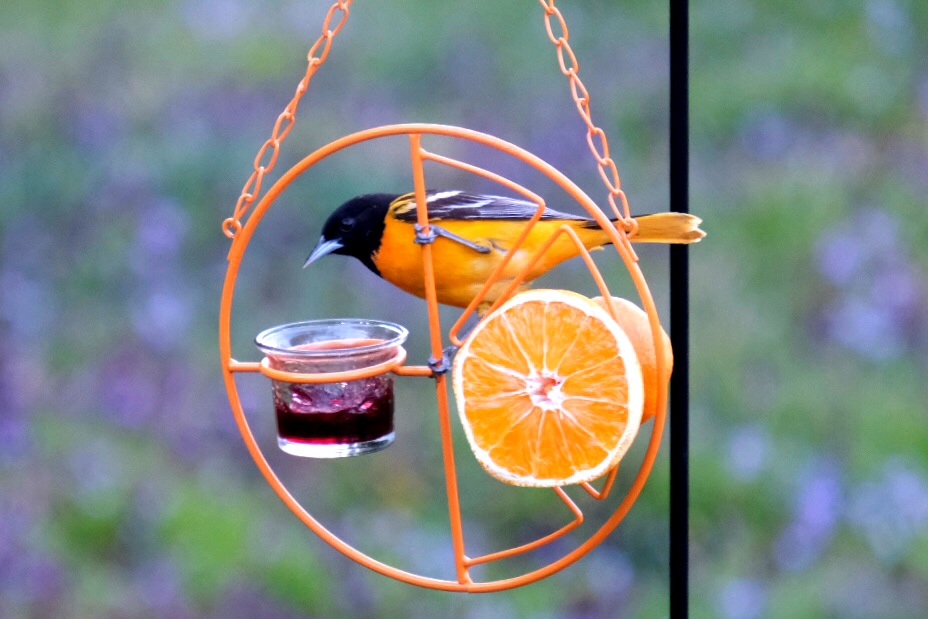
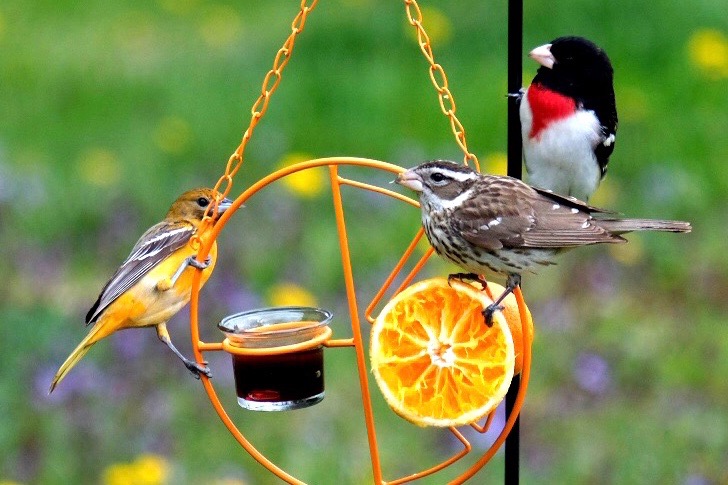
Living near the sea I am privileged to see piping plovers on the beach. There has been a resurgence in the population since beaches are less frequented by homo sapiens due to Corona virus. Bright white egrets and great blue herons scour the tidal inlets for fish. We have observed osprey flying high above us at times with fish- oriented head- first in their claws. Common terns dive- bomb the shallow waters looking for food. There are a few migrating sand pipers gathering on the shore.
Keep your dogs on a leash please. Do not tell me your dog does not chase birds if allowed to run free. When a dog chases a migratory bird, it becomes nervous. A frightened bird will likely not eat enough to survive its ambitious migration. On our neighbouring beach large black backed sea gulls and herring gulls pluck crabs from the sand. They will eat almost anything, but French fries are not healthy bird food.
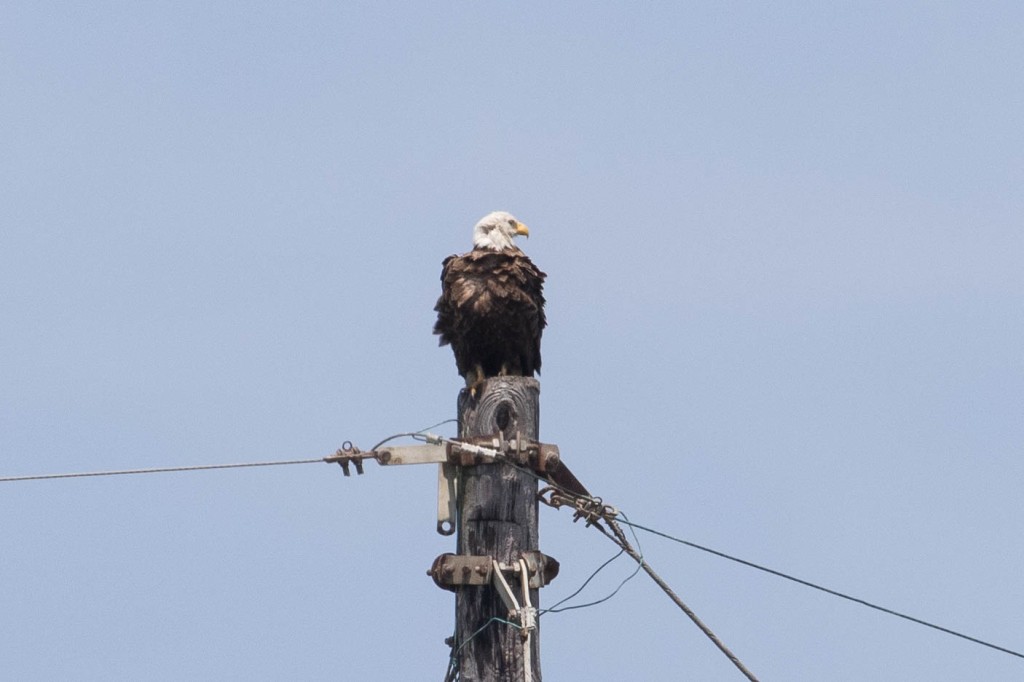
Since I became aware of birds, I find so many new species everywhere I look. I am a compulsive taxonomist wanting to understand nature. I have seen a wood thrush and a yellow warbler deep in the woods. Unfortunately, my hearing aids make me more of a visual bird conservationist. I regret now that I did not start sooner, before my hearing deteriorated. Many bird lovers use the unique birdsongs to identify and further appreciate our feathered friends. It is never too late to begin. Just grab a bird book like Sibley’s (2) or National Geographic Birds and a pair of binoculars and go for a Covid free walk.
I thank David Moon from MA Audubon and Robert Dealy for their help with photos.
Next entry will be “weeds are just good plants in the wrong places.”
BIBLIOGRAPHY
- Tallamy Doug. Bringing Nature Home; Timber Press Portland Oregon 2007
- Sibley David Allen. The Sibley Guide to Birds; AA Knopf, New York 2000.
- Dunn Jon and Alderfer Jonathan. A National Geographic Field Guide to the Birds of North America Seventh Edition. Washington DC
Isn’t it fun to watch all the birds!! I love their coming and going and marking the time of year! Beautiful pictures Sandra! Thanks for sharing your thoughts
LikeLike
What an amazing photo of the Grosbeaks and Goldfinch—NatGeo worthy! We are lucky here in MetroWest Boston to be surrounded by conservation land and have enjoyed the flute-like trill of a Wood Thrush who returns each year to nest. Unfortunately, we have never caught a glimpse, he’s quite stealthy!
Thank you for the interesting bird and nature facts. I always feel smarter after reading one of your posts!
LikeLike